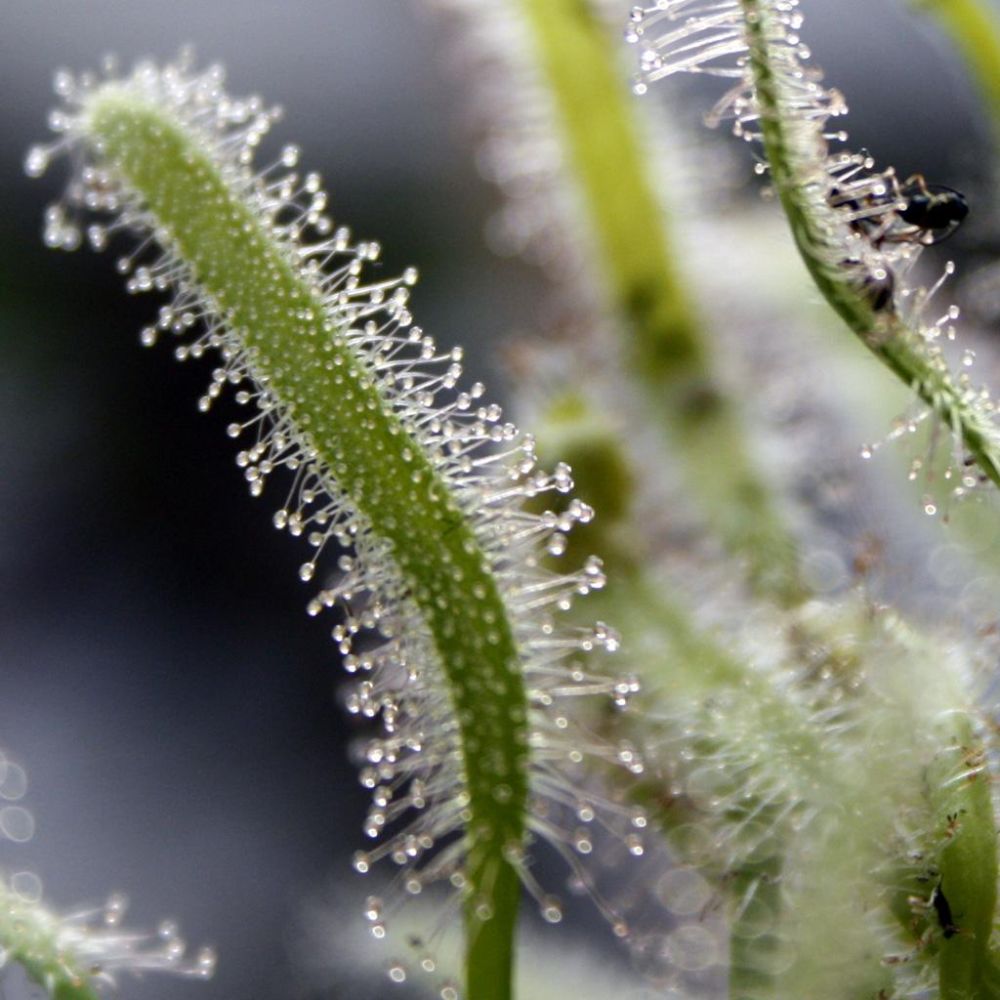
Drosera capensis alba
Drosera capensis - White Form. The White Form of Cape Sundew, Drosera capensis alba, is similar to the Typical Form, except in color, which is an all-over limey green. It is slightly smaller than the Typical Form. It is one of the easiest of all carnivorous plants to grow. It is medium-size with long strap-like leaves, loaded with red tentacles.

Drosera capensis 'Alba' (Cape Sundew 'Alba') Carnivorous Plant Store
Drosera capensis is a clumping, perennial carnivorous plant, to 15cm in height producing basal rosettes of linear-oblong to spoon-shaped leaves, 3 - 6cm (1½ - 2½ in) long on a short stem. Leaves are green and covered with red, sticky, glandular hairs, which trap and digest insect prey. A red-leaved form is also available in cultivation.

Drosera capensis Alba a white flowered form of the Cape Sundew in
Drosera capensis (the Cape Sundew) is the most common sundew in cultivation, since it is so easy to grow (once it is given favorable conditions). Drosera capensis originates from the subtropical Cape region of South Africa. Drosera capensis is commonly known to become a weed in sundew collections because the tall flower stalks produce copious.
Drosera capensis 'Alba' Farmyard Nurseries
Drosera capensis var. alba (Droseraceae) commonly known as the Cape sundew (Fig. 1) is a carnivorous plant native to the Cape in South Africa.The plants of Drosera genus are a natural source of pharmacologically important compounds (e.g. naphthoquinones, flavonoid glucosides, flavonoids, phenolic acids) used for the production of pharmaceuticals because of their interesting biological.

Drosera capensis ‘Alba’ 25s, Carnivorous Plant Sundew Seeds Little
Drosera Capensis Alba. An easy to grow from seed carnivorous plant that catches its own fertiliser ( insects). As with most carnivorous plants it grows in an acid wet environment, so the best medium to use is sphagnum moss peat ( WITHOUT added fertiliser) or well rinsed coconut coir and perlite..Most carnivorous plants catch insects because.
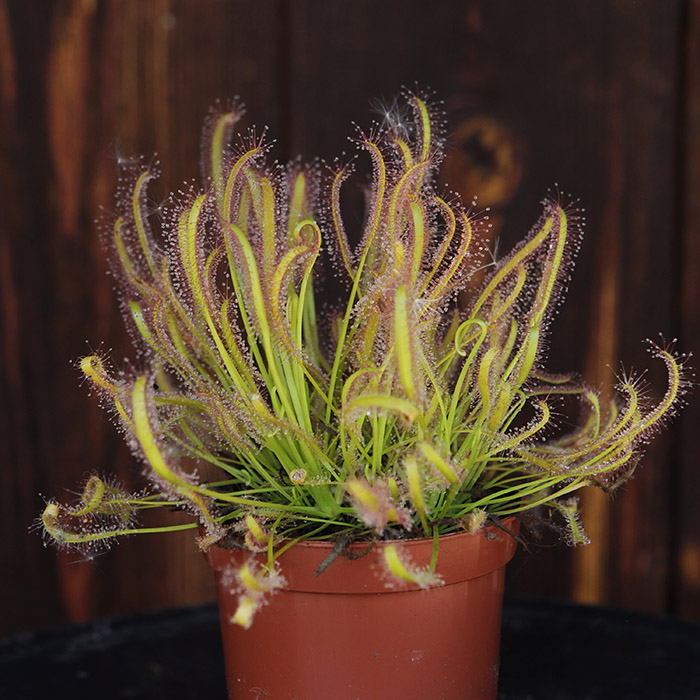
Drosera capensis alba Cape Sundew, white form
DS007 Drosera capensis alba Sundew. £ 6.00. In Stock. Add to Wish List. You will earn 6 points with this purchase. DESCRIPTION. Another plant that is very easy to grow , pale green foliage with white flowers. The leaves can grow to around 4in and are excellent white fly catchers! Best grown in an unheated greenhouse or a conservatory, stand in.

Drosera capensis "alba" Cape Sundew White Flowers
Despite its rather gentle sounding name, the sundew, also known as Drosera capensis, is a carnivorous plant.It belongs to one of the largest genera of carnivorous plants, with over 90 separate species.These species feature many sub-species as well and they have descriptive names like King Sundews, Temperate Sundews, Rosetted Sundews, etc.

Drosera Capensis Alba, la Drosera con el "Pegamento" Blanco
Drosera capensis contrasts beautifully with the white form, Drosera capensis 'Alba', which has much paler green leaves and white flowers. Cape sundews do best in full sun in a nutrient-poor, acidic medium such as a peat-free specialist carnivorous compost. Keep compost wet during spring and summer by standing the pot in a tray of rainwater.
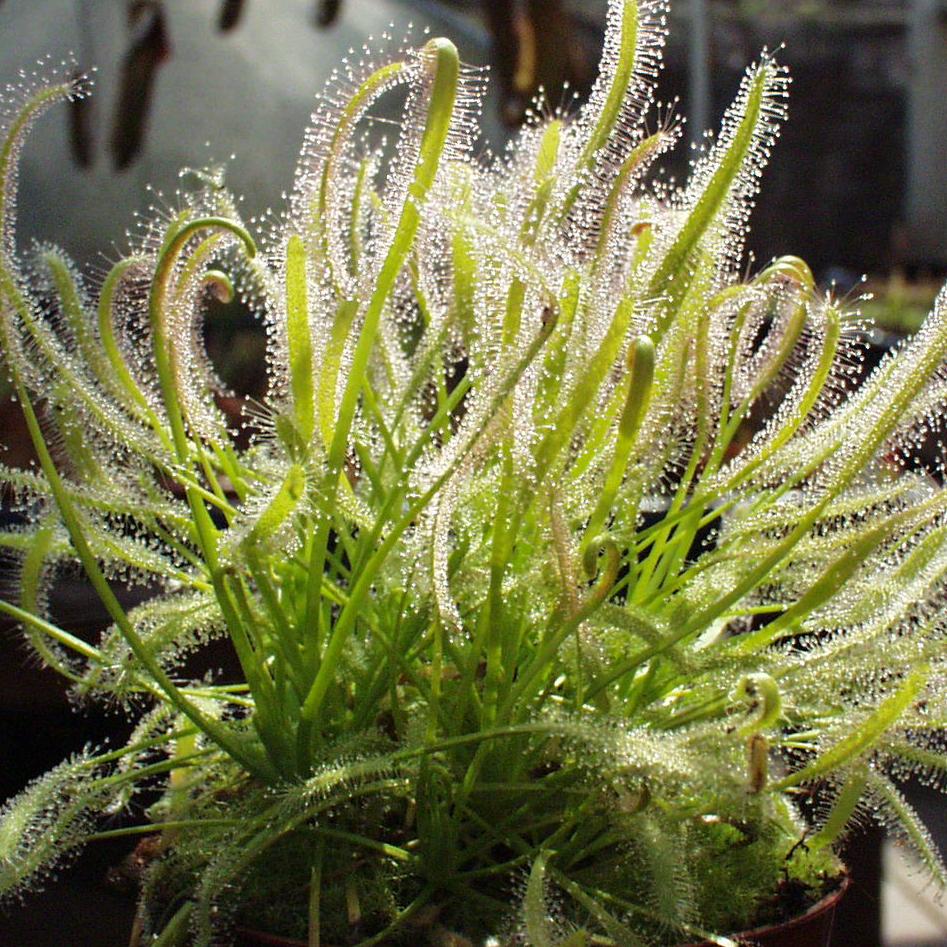
Drosera capensis alba Cape Sundew, white form
Drosera capensis 'Alba'. D. capensis produces strap-like leaves, up to 3.5 centimetres (1.4 in) long (not including the petiole) and 0.5 centimetres (0.2 in) wide, [4] which, as in all sundews, are covered in brightly coloured tentacles which secrete a sticky mucilage that traps arthropods. It is a perennial, herbaceous plant that forms a.
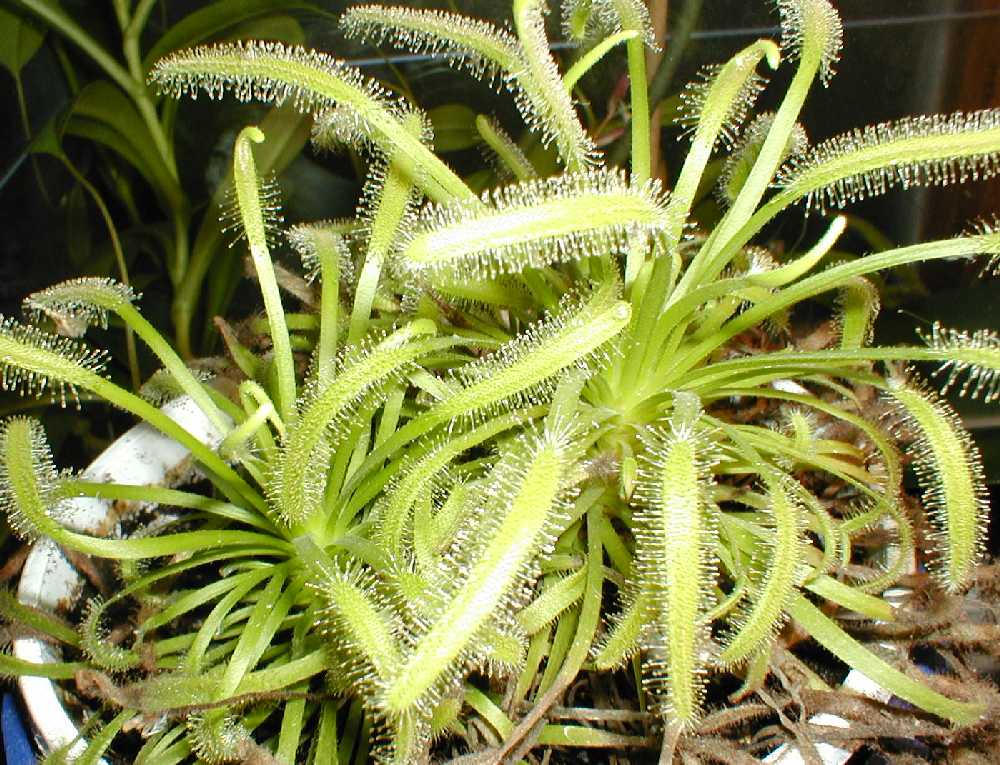
Drosera capensis alba EcuRed
Drosera capensis alba. Join the RHS. Become an RHS Member today and save 25% on your first year. Join now. Save to My plants. Learn more about My Garden . Buy this plant. Plant nurseries 3 suppliers; Size. Ultimate height 0.1-0.5 metres . Time to ultimate height 2-5 years . Ultimate spread 0.1-0.5 metres . Growing conditions.

Drosera capensis alba (Cape Sundew) for sale Carnivorous Plant Resource
Noteworthy Characteristics. Drosera capensis, commonly called cape sundew, is a carnivorous, herbaceous perennial native to marshes, seeps, stream banks, and in other moist, open habitats in the Cape region of South Africa.Mature plants will reach up to 6" tall and spread to form equally wide clumps. The leaves have 2" long petioles (leaf stalks) and 2" long, narrowly oblong to linear blades.

Drosera capensis (Alba)
Also known as a white Cape Sundew, the Capensis Alba is the albino version of. Drosera Capensis. Cape Sundews get their distinctive red coloring from anthocyanin, which. the Alba lacks: Both the dew-tipped tentacles and its flowers are white. Your white Cape. Sundew needs the same growing conditions as its red twin, and many plant growers enjoy.
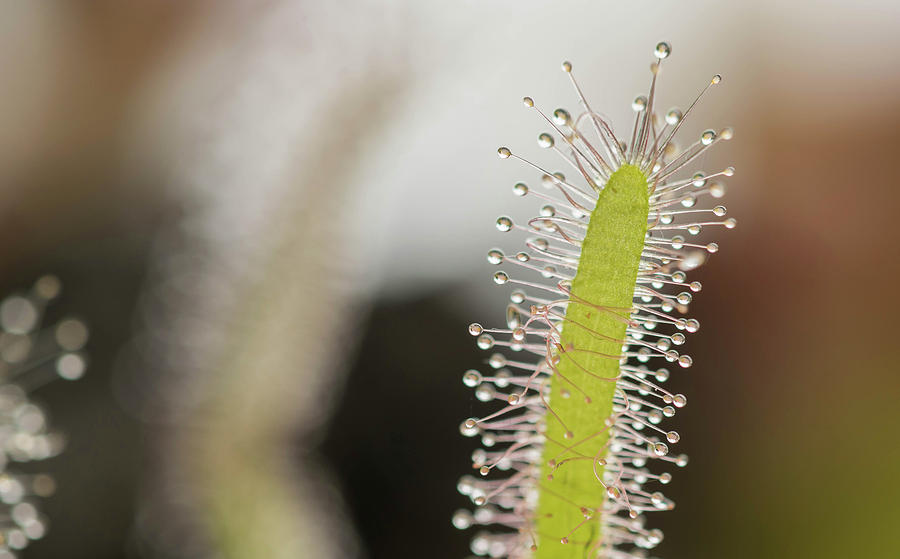
Drosera Capensis alba closeup view. Photograph by Wael Alreweie Fine
It can be a challenge to care for Drosera Capensis, as it requires a very specific environment. The list below includes key considerations when growing Cape Sundews. Soil: Employ nutrient-free and fertilizer free soil—a mixture of peat moss or sphagnum moss with peat or silica sand is a suitable option. Lighting: These plants need lots of light.
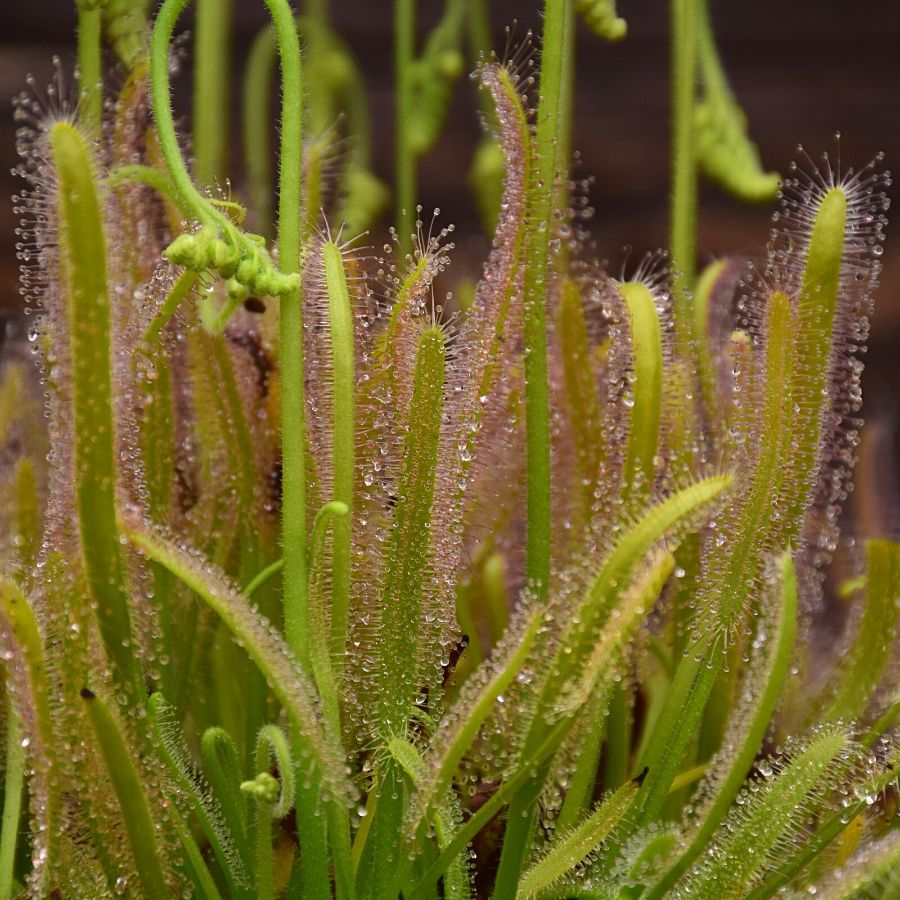
Drosera Capensis 'Alba' Plantes Carnivores LES DENTS DE LA TERRE
These beautiful sundews (Drosera capensis) are the albino form of the Cape Sundew. 'Alba' lacks red pigment (anthocyanin) so its tentacles aren't red and the flowers are white. Grow it next to the red Cape Sundew or a red Sarracenia for a stunning contrast! Cape Sundews catch gnats, fruit flies and even an occasional house fly.
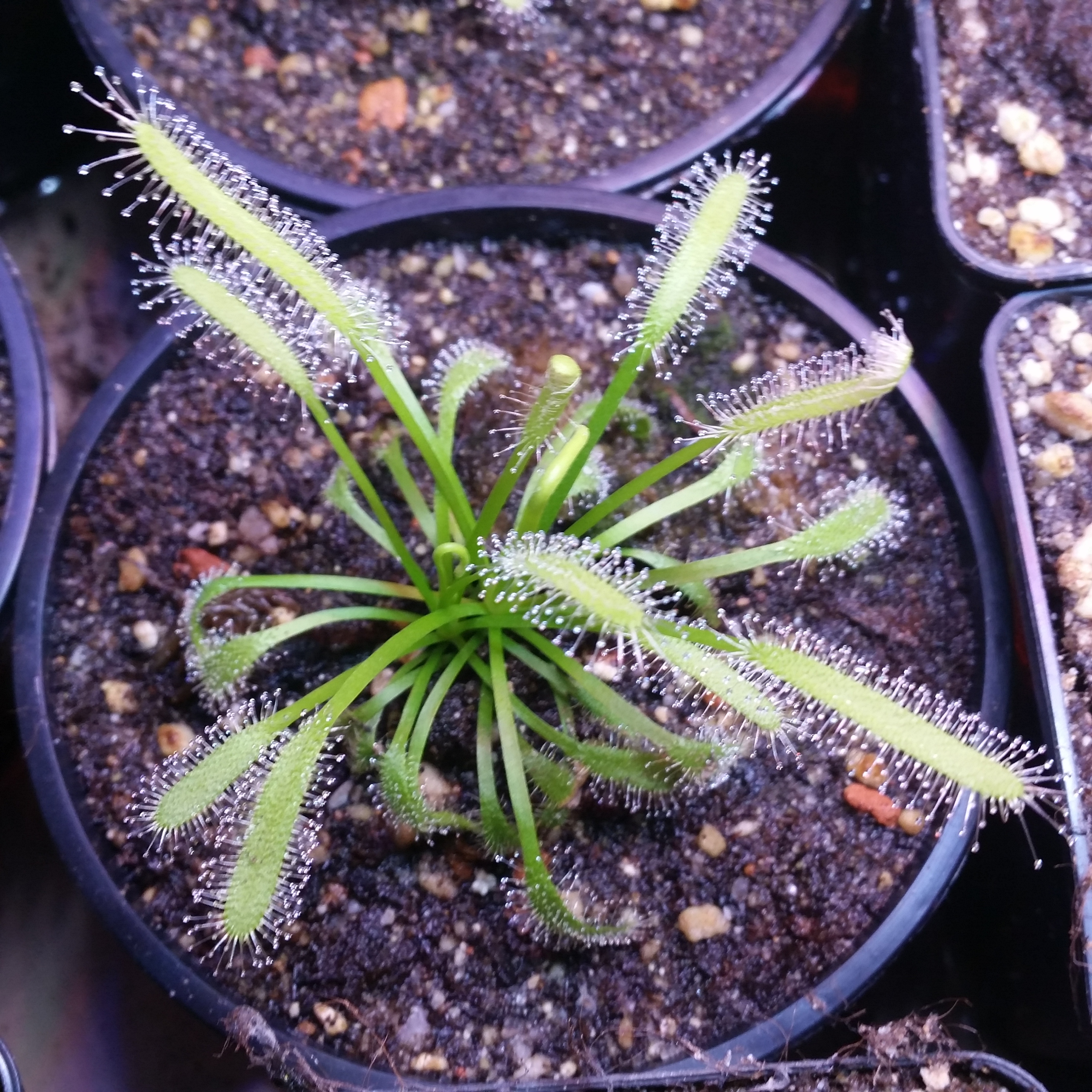
Drosera capensis alba Karnivoren Strauch
Drosera capensis soil and planting. Like other carnivorous plants, the Cape sundew naturally grows in nutrient-poor soil and will not do well in a normal potting mix. Instead, you can create a "carnivore mix" using 50% Sphagnum moss and either perlite or sand. Be sure to rinse your moss before using it. Because Drosera capensis likes to be.

Drosera capensis 'Alba' (Cape Sundew 'Alba') Carnivorous Plant Store
Drosera capensis Alba is very similar to regular D. capensis, but it lacks red pigment which forms in bright light. When it's exposed to intense light and if it's not regularly fed, it's tentacles turn pink. When fed or in low light conditions, they loose their pink coloration and turn green with white tentacles.